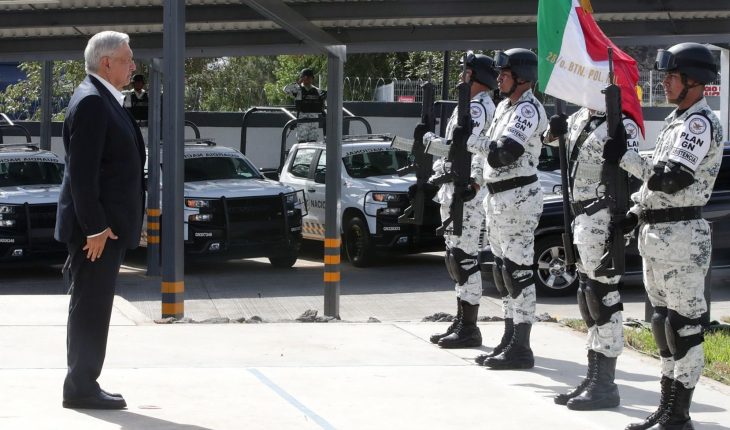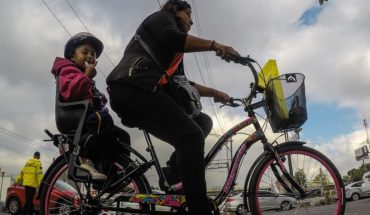Today marks the first year of the deployment of the National Guard (GN), the new security force created by the current federal government with the main mission of pacifying the country. However, despite its presence, the level of homicides recorded in Mexico is still rising.
Official data reviewed by Political Animal as they prove it: from June 2019 to May 2020, i.e. during the first 11 months of its operation (June 2020 data are not yet available), the number of victims of murder amounted to 32 thousand 78 people.
This represents almost 450 more murders compared to the same 11 previous months (June 2019 to May 2020) when there was no operation in the country National Guard deployed.
But even with the National Guard at full throttle, there’s no sign of improvement. In the first five months of 2020, 15 thousand 16 murders were recorded, almost 500 more than in the same period of 2019 which was already a record level.
The GN’s own elements are the target of violence. Just yesterday a convoy of that force was ambushed by armed subjects in the municipality of Tula de Hidalgo in Jalisco. The assault, federal authorities confirmed, left a guard dead and five more injured.
The commander-in-chief of the National Guard, General Luis Rodríguez Bucio, argued last week that 90 thousand troops of this new force are deployed in the country with the primary work of “supporting the states in public safety” and combating violence.
However, an analysis by the National Observatory for the National Guard shows that this deployment does not follow clear logic, at least in terms of prioritizing combat in the most violent states. Proof of this is that entities with higher homicide rates such as Guanajuato, Baja California or Chihuahua are not among the ones with the most guards.
There are even states like Querétaro, one of the safest in the country, where the assigned guards rate is higher than that of Guanajuato, a state that concentrates almost one-fifth of all murders.
“Sadly we have seen no correlation of the Impact of the National Guard on the issue of reducing violence and crime. Territorial deployment does not even meet the needs of entities with the highest crime rates. Its mobilization has not been synonymous with greater security even with a deterrent effect”, says the director of the United United Anti-Crime organization and a member of the observatory, Lisa Sánchez.
Political Animal he published in the report “Crime and Violence: The War That Doesn’t End” that even though the growth of homicides in the past year and a half has slowed, there is no evidence to support that this is related to the National Guard, especially since that slowdown has occurred since mid-2018, even in the past six-year.
An Army branch
Although constitutionally conceived as a civilian security force, the National Guard is composed mostly of elements of the armed forces, and under the full operational command of the Secretariat of National Defense (Sedena).
The analysis of the Citizen Observatory built on requests for transparency shows that this force consists of military police, naval police, and new elements recruited by the Defense and Navy secretariats, and then be temporarily commissioned to the Guard.
Alejandro Hope, a security expert and member of the observatory, revealed that the National Guard has not created a single new square for its elements. The salaries of the staff are covered by the armed forces as they are their own places.
This means that the Guard recruitment figures that are often reported are actually effective in which the New Security Force is “borrowed” by the Defense or Navy.”
“The National Guard is an Army branch in another unit, simple as that. As a civilian, he’s got nothing but the name. The head of the 1st Active Military Zone, for example, is the guard coordinator in Mexico City. There is not even the functional separation that had been contemplated by law. It’s very clear,” Hope says.
Although the GN is a force attached to the Secretariat of Security and Citizen Protection (SSPC), it does not even own its facilities. Military bases being built throughout the Army are built by military engineers on land that states have relented on InDena.
“The functions of GN are in addition to the powers of the Armed Forces, which have also increased importantly during the current government. This flow of responsibilities constitutes political abuse, at the expense of the prestige and capabilities of the Armed Forces,” the report says.
Dubious preparation and opacity
Another point highlighted by the Observatory’s report is the lack of transparency related to the shaping of GN. This is because beyond the announcements given at conferences, there is no precise and proactive information on their level of formation, preparation and evaluation schemes, territorial deployment figures, exercise of their resources and distribution of their places, among others.
Only through requests for transparency addressed to the units involved is it possible to collect information that has sometimes been incomplete, or contradictory.
For example, on the training of GN elements, the SSPC did not give details as to the duration or content of the GN and requested to direct the requests to the Castrenses. These in turn forwarded the application directly to the GN which in July 2019 said that the course for active items was 584 hours, but a month later it indicated that it was 385 hours.
Instead, the Ministry of the Navy noted that the initial course was 405 hours, a figure that did not match any of the previous ones.
“There is no clarity in training, there are no clear criteria as to how deployment is defined, it is not known how the assessment or the applied confidence control is progressing. It’s a dance of confusing numbers and opacity,” said David Blanc, a researcher at the joint cause organization.
Civilian police, in abandonment
Another point alerted by the Observatory’s experts is the neglect of local police in the country, even though the formation of the National Guard was paired with the development of civilian security forces.
The starting point, in accordance with the seventh transitional article of the constitutional decree that gave rise to the birth of the GN, was the development and presentation of diagnostics and development programs for state and municipal police corporations.
But such diagnoses were never presented at least publicly, and less is known about the implementation of these. What has been documented is that a good proportion of local police continue to work in low-wage situations and poor preparation.
In contrast, the participation of the Army and Navy has continued to deepen. Proof of this, they said, is the presidential agreement issued last May that supports military intervention in public security without setting deadlines or mechanisms for oversight of it.
“As the country has accelerated militarization, there is no real effort to rescue and strengthen the country’s police. By contrast, most local corporations barely survive under precarious conditions,” the analysis concludes.
What we do in Animal Político requires professional journalists, teamwork, dialogue with readers and something very important: independence. You can help us keep going. Be part of the team.
Subscribe to Animal Politics, receive benefits and support free journalism #YoSoyAnimal.
translated from Spanish: One year after the National Guard in Mexico, violence grows
June 30, 2020 |





